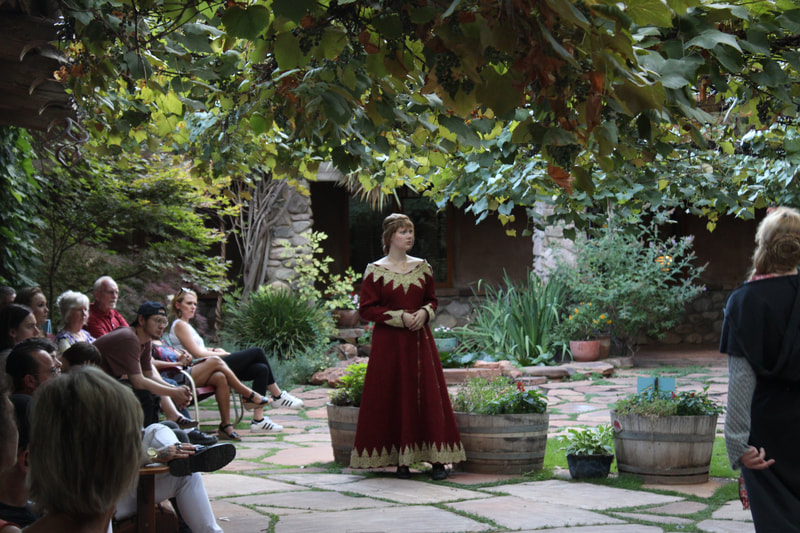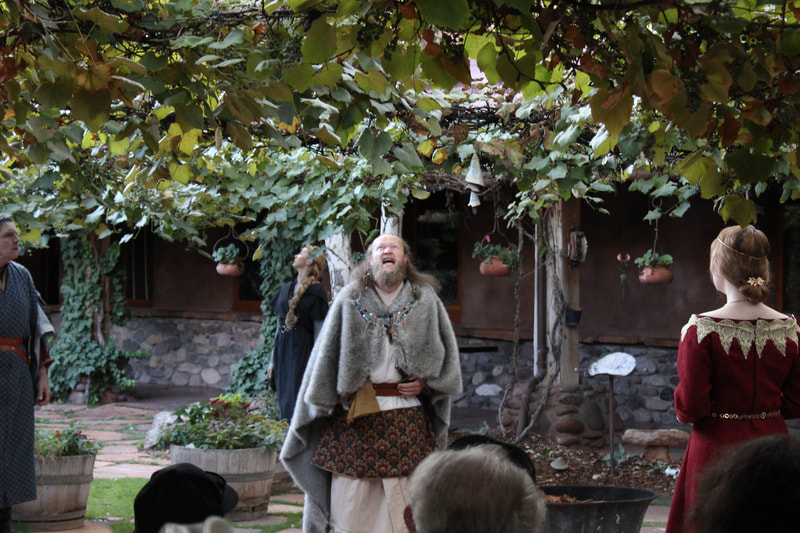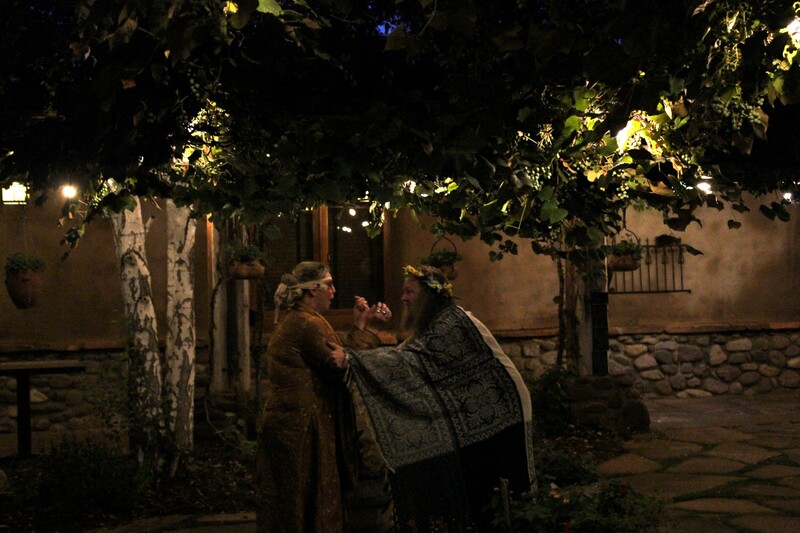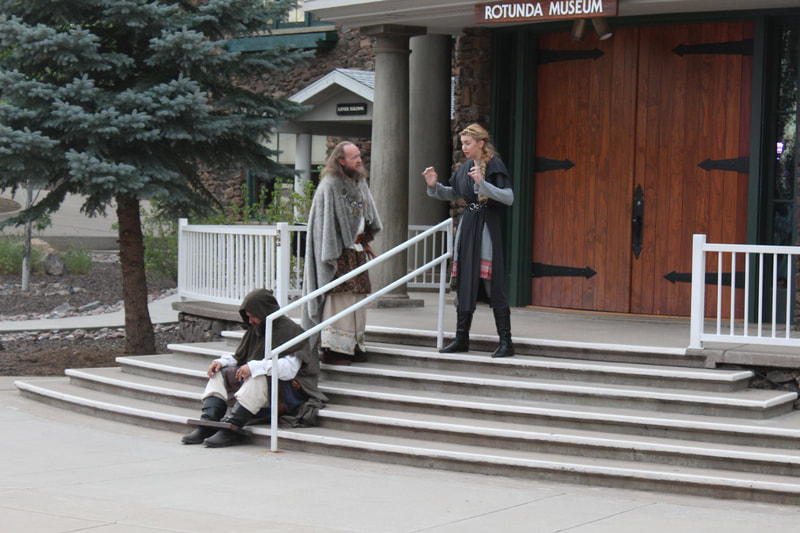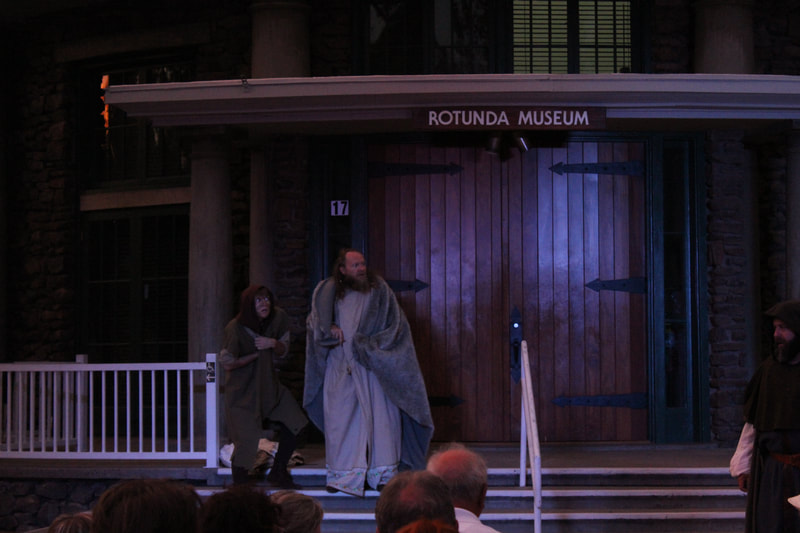Christina Gutierrez-Dennehy
In June of 2017, I had the privilege to see a one-woman version of King Lear at the Sam Wannamaker Playhouse in London. Performer Debs Newbold narrated Shakespeare’s story in addition to performing most of the principle characters, creating a version of the iconic tragedy that was stunning in its simplicity and clarity. Newbold performed on a bare stage, transforming her body into the aged king, his scheming daughters, and nature itself as Lear confronted the storm on the heath. The exception to Newbold’s relative adherence to Shakespeare’s text came in her treatment of the Fool. Rather than a member of Lear’s court, as he appears in the original text, Newbold’s Fool was a voice in Lear’s head, born of his newfound self-doubt after banishing his youngest child, Cordelia. Lear is a king used to commanding respect, and he believes himself to be infallible. The error he comes to realize he has made in banishing Cordelia fracturs his brain, as he cannot believe simultaneously that he can be both king and wrong. The result is a Fool-voice, which no one but Lear himself can hear.
Newbold’s notion of the Fool struck me as an exciting way to solve what I see as two of the play’s challenges. First, Shakespeare is famously unclear about the causes and particularities of Lear’s madness, hinting only that it arises from his fear of women or of lost masculinity. This gendered reading of madness is problematic for today’s audiences, who understand mental health in a much different way than Shakespeare’s original audiences. Secondly, American audiences are primed to see leaders as inherently flawed people susceptible to external pressures and internal biases. The notion of an infallible ruler—the kind Lear believes himself to be—is disturbing to democratic citizens. Newbold’s notion of the Fool-voice addresses both of these concerns, resulting in a Lear whose madness is self-created, and who learns to recognize his own vulnerability.
Of course, Newbold created her Lear as a one-woman show. The version i directed for Crooked Figure Theatre adapted the Fool-voice concept to a full production, combining Newbold’s work with our own questions about mental illness, power, age, and gender. Rather than a voice, the CFT Fool was a fully embodied character, visible only to Lear, who might remind audiences (and Lear himself) of a particular character who plays a key role in the king’s madness. Additionally, we re-imagined a few of Shakespeare’s characters in an effort to ask questions about the gendered nature of power both in Lear’s world and in ours. Like the Fool-voice in Newbold’s version, Lear has been a near-constant presence in my head as I’ve worked with Shakespeare’s other kings.
Newbold’s notion of the Fool struck me as an exciting way to solve what I see as two of the play’s challenges. First, Shakespeare is famously unclear about the causes and particularities of Lear’s madness, hinting only that it arises from his fear of women or of lost masculinity. This gendered reading of madness is problematic for today’s audiences, who understand mental health in a much different way than Shakespeare’s original audiences. Secondly, American audiences are primed to see leaders as inherently flawed people susceptible to external pressures and internal biases. The notion of an infallible ruler—the kind Lear believes himself to be—is disturbing to democratic citizens. Newbold’s notion of the Fool-voice addresses both of these concerns, resulting in a Lear whose madness is self-created, and who learns to recognize his own vulnerability.
Of course, Newbold created her Lear as a one-woman show. The version i directed for Crooked Figure Theatre adapted the Fool-voice concept to a full production, combining Newbold’s work with our own questions about mental illness, power, age, and gender. Rather than a voice, the CFT Fool was a fully embodied character, visible only to Lear, who might remind audiences (and Lear himself) of a particular character who plays a key role in the king’s madness. Additionally, we re-imagined a few of Shakespeare’s characters in an effort to ask questions about the gendered nature of power both in Lear’s world and in ours. Like the Fool-voice in Newbold’s version, Lear has been a near-constant presence in my head as I’ve worked with Shakespeare’s other kings.
